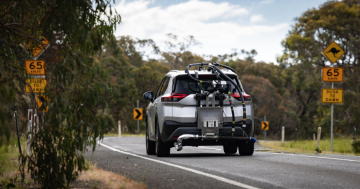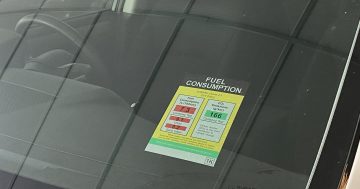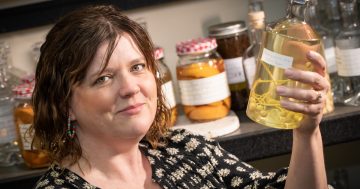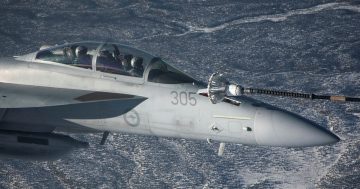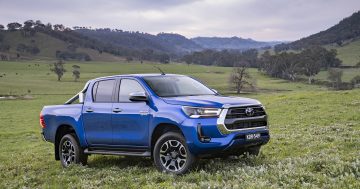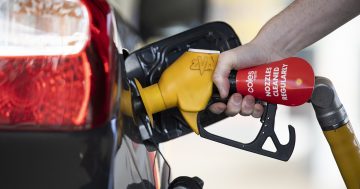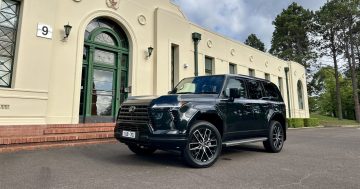Despite the return of the fuel excise, the national average price of a litre of unleaded went down last week. Daniel Ziffer* says prices at the pump are expected to rise again, but there’s no one simple explanation for it.
 Buying petrol in Perth at the moment? You’re paying more than anyone in any other capital.
Buying petrol in Perth at the moment? You’re paying more than anyone in any other capital.
For now.
The reinstatement of the fuel excise — cut for six months to take the sting out of soaring fuel prices — is creating uneven costs at pumps across the nation.
Despite the tax hike, the national average price of a litre of unleaded fuel went down last week to 182.5 cents.
The price is expected to rise, but there’s not one simple explanation for it.
Excise back up
When Russia invaded Ukraine, the conflict in the oil-rich regions pushed up global oil prices and led to Australian consumers paying more than $2 a litre for fuel.
At the time, the fuel excise was 44 cents a litre and the Morrison government announced it would be cut in half for six months.
That tax holiday ended on September 28.
Rather than boosting prices by 22 cents a litre, the reimposition of the fuel excise is a 25.3-cent bump because the cost is indexed.
But after a week and a half of the excise being back in full, only Perth is paying that much or more.
Prices in Canberra and Hobart are up 11 cents a litre, 1 cent in Darwin and 7 cents in regional areas.
Prices in Melbourne, Sydney, Brisbane and Adelaide have gone down between 2 cents and 5 cents a litre.
Price cycle
One of the reasons for this uneven impact is the petrol price cycle.
Perth’s is currently near the top.
The cycle, most notable in capital cities, tends to move up and down over a period of weeks.
Mark McKenzie is chief executive of the Australian Convenience and Petroleum Marketers Association (APACMA) and represents fuel wholesalers and retailers.
“The key to shrewd buying in the capital city markets is to understand the petrol price cycle, which tends to go on the basis of starting very high,” he says.
“Then, there are generally discounts over a period of four to six weeks.
“What motorists need to be really looking for is when they start to see a big difference between individual retailers in the same area.
“That’s generally an indication that the cycle is starting to turn, and that’s the point at which you jump in to purchase at the lower price.”
The Australian Competition and Consumer Commission has information about the current price cycles in major cities that consumer can use to judge when their price cycle is starting to turn.
World impact
But the cost of fuel at your local petrol station is impacted by factors far beyond the amount of competition they face, their distance from a capital city and the decisions of the Australian government.
Vivek Dhar, the mining and commodities economist for our biggest bank, the Commonwealth Bank, explains that oil-producing countries and the world economic outlook will dictate what you pay at the pump in the coming months.
Global oil prices slumped by almost a quarter in the past three months.
At a meeting last week the largest oil producing nations – a group called OPEC+ — decided to trim the amount of oil produced to boost prices.
“Prices have increased almost 15 per cent,” Mr Dhar says.
“No-one was really expecting OPEC+ to be that aggressive.”
This has happened at the same time as the European Union (EU) has announced more sanctions on Russia.
The EU will ban imports of Russian oil brought in by sea from December and ban all imports of refined oil products from Russia from February.
Now there are big risks of a supply shortfall, Mr Dhar says, that there won’t be enough oil to meet demand.
“And that’s what’s driving market sentiment right now — and high oil prices”
The Weak Australian dollar
The other big impact — beyond anyone’s control — is the falling strength of the Australian dollar.
It’s currently trading near 63 US cents.
That means 100 Australian cents buys just 63 US ones, and much of global trade is done in the greenback due to its dominance.
“So, as that has weakened, that has meant that Australians are paying more for petrol and diesel.
“And that’s something that once again is out of the control of consumers,” Mr Dhar says.
“It just means that we pay more for our imports, which is what we do with petrol and diesel”.
Pump pain
There’s more pain at the pump ahead.
CommSec chief economist Craig James cites the national average wholesale price rise of 170.7 cents — and a rise of 13.4 cents last week (the figures are from the Australian Institute of Petroleum).
When that flows through, he sees the new “fair” price of petrol being $1.90 a litre.
And he has a warning.
“Prices at the local petrol pump are still falling in Sydney, Melbourne and Brisbane due to the discounting cycle,” he has written in a note to investors.
“The cycle will end in the next fortnight with the risk that prices could spike to $2.15 a litre.”
For consumers struggling, there’s little consolation that even with the excise discount gone Australia enjoys some of the cheapest and most lightly taxed fuel in the world.
In Spain or New Zealand you’ll pay more than $2.50 a litre in Australian dollars right now.
In Germany, Italy or Greece it’s closer to $3 a litre.
And in places like Denmark or The Netherlands the price of a litre of fuel is beyond $3 a litre.
*Daniel Ziffer has worked at the intersection of journalism and public debate for nearly two decades. He covers Melbourne-based issues for ABC News.
This article first appeared at abc.net.au.



